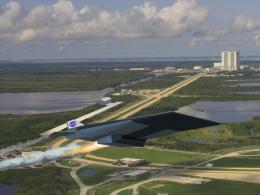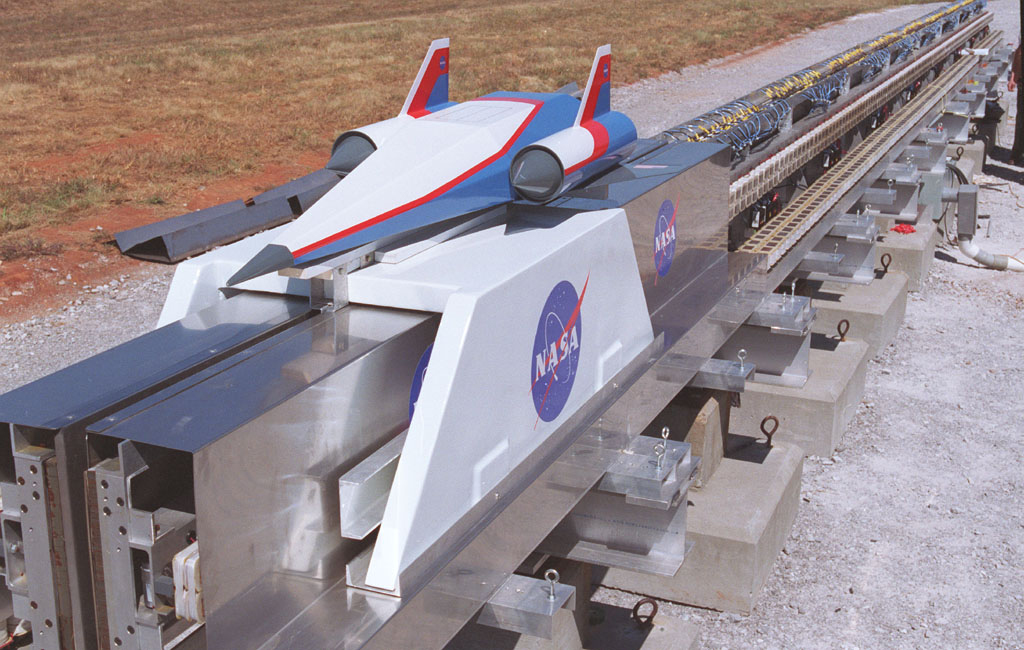Revolutionary horizontal space launcher proposed by NASA
September 14, 2010
NASA is considering a revolutionary new horizontal rail launcher concept.
An early proposal calls for a wedge-shaped aircraft with scramjets to be launched horizontally on an electrified (magnetic levitation, or maglev) track or gas-powered sled. The aircraft would fly up to Mach 10, using the scramjets and wings to lift it to the upper reaches of the atmosphere, where a small payload canister or capsule similar to a rocket’s second stage would fire off the back of the aircraft and into orbit.
Engineers also contend the system, with its advanced technologies, will benefit the nation’s high-tech industry by perfecting technologies that would make more efficient commuter rail systems, better batteries for cars and trucks, and numerous other spinoffs.
NASA’s Stan Starr, branch chief of the Applied Physics Laboratory at Kennedy, points out that nothing in the design calls for brand-new technology to be developed. However, the system counts on a number of existing technologies to be pushed forward. “All of these are technology components that have already been developed or studied,” Starr said. “We’re just proposing to mature these technologies to a useful level, well past the level they’ve already been taken.”
For example, electric tracks catapult rollercoaster riders daily at theme parks. But those tracks call for speeds of a relatively modest 60 mph — enough to thrill riders, but not nearly fast enough to launch something into space. The launcher would need to reach at least 10 times that speed over the course of two miles in Starr’s proposal.
The studies and development program could also be used as a basis for a commercial launch program if a company decides to take advantage of the basic research NASA performs along the way. Starr said NASA’s fundamental research has long spurred aerospace industry advancement, a trend that the advanced space launch system could continue.
For now, the team proposed a 10-year plan that would start with launching a drone like those the Air Force uses. More advanced models would follow until they are ready to build one that can launch a small satellite into orbit.
Early designs envision a 2-mile-long track at Kennedy Space Center.
“It would be far better and more efficient to place the mag-lev track at much higher altitude and run it through a vacuum tunnel inside a mountain to eliminate air drag,” Dr. Eric W. Davis, Senior Research Physicist at the Institute for Advanced Studies at Austin, told KurzweilAI.
“Launching from higher altitude equals far less fuel to be carried by the second stage booster that rockets the hypersonic space plane into orbit. You could probably drop 20% to 30% of the fuel requirement.” Davis is co-author of Frontiers of Propulsion Science, published by the American Institute of Aeronautics and Astronautics.
More info: NASA news

